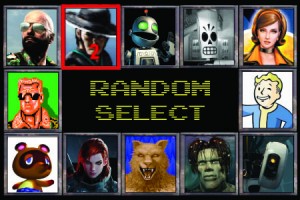
To kick off Random Select for 2014, we decided to take a look back at the outgoing generation of games and pick some of the titles that we found most memorable. While this may not necessarily mean ‘best’ in purely critical terms (Though most of these would feature in any decent Best of Gen list), for us it was all about the titles that had the strongest influence on the course of gaming. For us, these are the games that made the biggest mark, both on our own memories and on the creative directions the medium took as the generation took its course.
For the sake of argument, we’ve included PC games on the list because although the demarcation of generations is defined by the release of consoles the evolution of games in a generation stretches across all formats. It feels doubly appropriate here since this generation has seen the tech and design of PC games match consoles more closely than ever. As for the timeframe, we’re considering the generation to have started with the release of the Xbox 360 in 2005 and ended with the release of the Playstation 4 and Xbox One at the end of 2013.
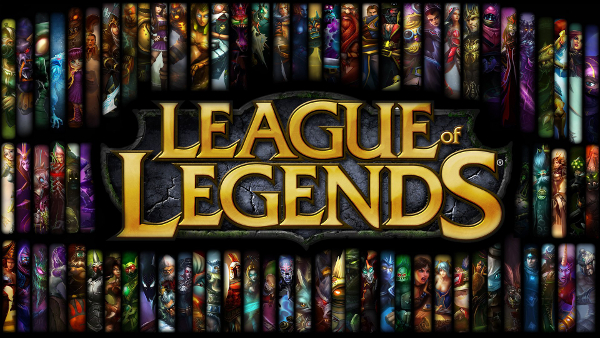
Cheap as Free: League of Legends, 2009
Yie Ar Kung Fu. Everquest. Hydrox. League of Legends may not have been the first attempt to cash in on the popular Defense of the Ancients mod, but ask whether it’s better to be first or be remembered and then watch the Demigod developers burst into tears. Much like World of Warcraft had taken the MMO genre and broken it over its knee, LoL soon established itself as the king of the MOBAs (multiplayer online battle arenas), with a reported 30+ million players, yours truly included. This is doubly impressive because much like competitive online shooters and fighting games, LoL quickly established a reputation as being about as inviting as a KKK mixer (With slightly more racial slurs!).
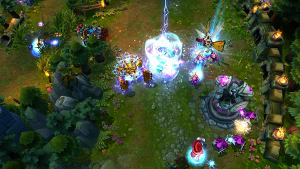 On a superficial level, the MOBA genre is fairly straightforward. You’re limited to controlling a single champion, and aided by AI minions or ‘creeps’ you and your team of 2-4 allies must push forward, killing the enemy and ultimately destroying their base. Of course that’s like saying the key to chess is moving the little whats-its around. How is the real stickler, and the source of so much eloquently expressed frustration by your teammates. Much like pick-up basketball, it’s all well and good when you have friendly teammates ignoring your terrible skills, but try and insert yourself on a random team and suddenly you’re drawing the ire of people who expect you to be able to dribble AND run. You know, simultaneously. And for Pete’s sake, stay in your lane you fucking noob idiot! Still, there’s an undeniable addictiveness to the genre, evidenced not only by the success of the original mod, but the swath of imitators who sought to copy it. I personally may have sunk in a few…hundred hours as well.
On a superficial level, the MOBA genre is fairly straightforward. You’re limited to controlling a single champion, and aided by AI minions or ‘creeps’ you and your team of 2-4 allies must push forward, killing the enemy and ultimately destroying their base. Of course that’s like saying the key to chess is moving the little whats-its around. How is the real stickler, and the source of so much eloquently expressed frustration by your teammates. Much like pick-up basketball, it’s all well and good when you have friendly teammates ignoring your terrible skills, but try and insert yourself on a random team and suddenly you’re drawing the ire of people who expect you to be able to dribble AND run. You know, simultaneously. And for Pete’s sake, stay in your lane you fucking noob idiot! Still, there’s an undeniable addictiveness to the genre, evidenced not only by the success of the original mod, but the swath of imitators who sought to copy it. I personally may have sunk in a few…hundred hours as well.
So what gave League of Legends the leg up over its competitors? Timing and quality certainly played a role, but it would be hard not to argue that League’s use of the free to play business model was one of the strongest points in its favor. While it’s becoming more and more common heading into this next generation of gaming hardware, the free to play model was still something of a novelty in 2009, where it gave League the enviable ability to be in the hands of even the marginally interested, instantly. And of course once the hooks were in…
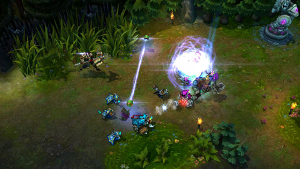 Once companies realized that it was possible to sustain a large player base with micro-purchases (combined with a small population of money-spewing obsessives) more and more games jumped on the F2P bandwagon, and soon almost all multiplayer focused games that didn’t rhyme with ‘Merld of Morecraft’ found themselves throwing open the doors of their games, only to reveal a series of tinier, coin operated doors. Even the legitimate heir to the throne, DOTA 2, adopted the free model, yet even as it and other titles like Heroes of Newerth and Awesomenauts stake out their own respective audiences, League continues to reign supreme as the 600 lb. gorilla of the genre, with optional mecha-gorilla skin available for only $1.99.
Once companies realized that it was possible to sustain a large player base with micro-purchases (combined with a small population of money-spewing obsessives) more and more games jumped on the F2P bandwagon, and soon almost all multiplayer focused games that didn’t rhyme with ‘Merld of Morecraft’ found themselves throwing open the doors of their games, only to reveal a series of tinier, coin operated doors. Even the legitimate heir to the throne, DOTA 2, adopted the free model, yet even as it and other titles like Heroes of Newerth and Awesomenauts stake out their own respective audiences, League continues to reign supreme as the 600 lb. gorilla of the genre, with optional mecha-gorilla skin available for only $1.99.
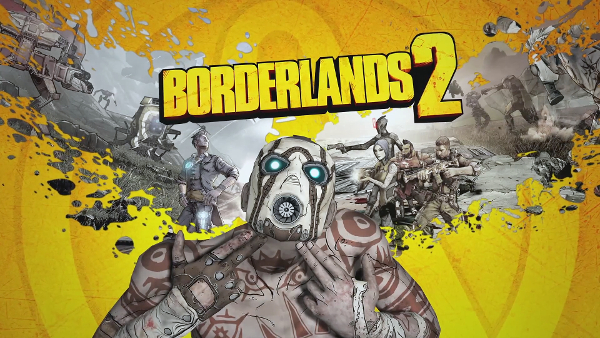
Mo’ Money Mo’ Missions: Borderlands 2, 2012
138 hours. That should tell you pretty much all you need to know about how much I enjoyed Borderlands 2. While the cumulative hours I sunk into League of Legends might be higher (albeit spread out over 4+ years), I can’t think of another game in recent memory that has sucked away that much of my time. It’s a game designed in such a way as to be either loved or hated (or maybe a little of both). With a sense of humor aimed squarely at the immature (and immature at heart) and the kind of grinding gameplay that would do a miller proud, Borderlands 2 viciously seized the incremental achievement part of my brain and never let go. If circumstance hadn’t separated me from my primary gaming rig, I’d probably still be playing it now as an increasingly exasperated Cavan wondered where the hell this article was.
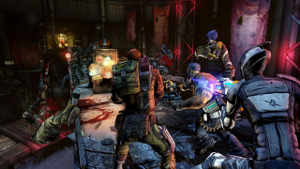 Of course there are plenty of games designed to trap you on the leveling treadmill, and I’ve played my fair share of them. Diablo III sucked up a good chunk of time, as have various Android titles recently. Yet something kept me coming back to Borderlands 2 again and again even as my love affair with other games cooled. Personality certainly played a part, as paired with a charming cell-shaded aesthetic the aforementioned low-brow humor combined to form a perfect homicidal Looney Tunes vibe that suited me to a tee. I’d also say that compared to its predecessor (a fine game in its own right) major improvements were made both in the quality of the writing and the variety of the quests.
Of course there are plenty of games designed to trap you on the leveling treadmill, and I’ve played my fair share of them. Diablo III sucked up a good chunk of time, as have various Android titles recently. Yet something kept me coming back to Borderlands 2 again and again even as my love affair with other games cooled. Personality certainly played a part, as paired with a charming cell-shaded aesthetic the aforementioned low-brow humor combined to form a perfect homicidal Looney Tunes vibe that suited me to a tee. I’d also say that compared to its predecessor (a fine game in its own right) major improvements were made both in the quality of the writing and the variety of the quests.
Yet at the end of the day, long after dialogue was being skipped and scenery was being ignored during the umpteenth playthrough, it was the gameplay and the loot that kept me playing for just five…more…minutes. And what helped set that gameplay apart was that Borderlands ditched the click, click, die controls of similar loot-based RPGs in favor of a click, click, BOOM MUHAHAHAHAHA approach, a deft mixing of Diablo’s peanut butter with Doom’s chocolate. Granted, it wasn’t the first game to try this approach (Remember Hellgate: London? Yeah, me neither.) but it represented a particularly extreme and successful example of the RPG/Shooter inbreeding evidenced in games like CoD.
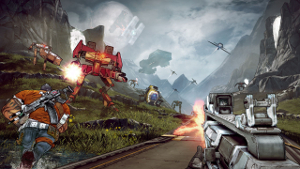 Of course a relationship is always helped by switching things up in the bedroom, and Borderlands 2 also embodied another seemingly ubiquitous trend: the rise of DLC. Granted, depending on how you look at it rise may be less apt than, say, cancerous growth, but hey, that’s business. From its humble beginnings as laughably overpriced accoutrement for your mount, DLC now represents a huge chunk of a game’s value as additional content and occasionally little things like, say, the games actual ending, are delivered piecemeal after the main title’s release. Yet when done right DLC can be a great way to incentivize both players AND developers to continue supporting a title well after release, and while the quality may have varied, for the most part Borderland 2’s offerings have done great job of encouraging players like myself to go back for one more turn around the wasteland. Plus, there’s a pack where you can shoot Dwarves in the face with an explosive shotgun, which is pretty much all I can ask from an add-on.
Of course a relationship is always helped by switching things up in the bedroom, and Borderlands 2 also embodied another seemingly ubiquitous trend: the rise of DLC. Granted, depending on how you look at it rise may be less apt than, say, cancerous growth, but hey, that’s business. From its humble beginnings as laughably overpriced accoutrement for your mount, DLC now represents a huge chunk of a game’s value as additional content and occasionally little things like, say, the games actual ending, are delivered piecemeal after the main title’s release. Yet when done right DLC can be a great way to incentivize both players AND developers to continue supporting a title well after release, and while the quality may have varied, for the most part Borderland 2’s offerings have done great job of encouraging players like myself to go back for one more turn around the wasteland. Plus, there’s a pack where you can shoot Dwarves in the face with an explosive shotgun, which is pretty much all I can ask from an add-on.
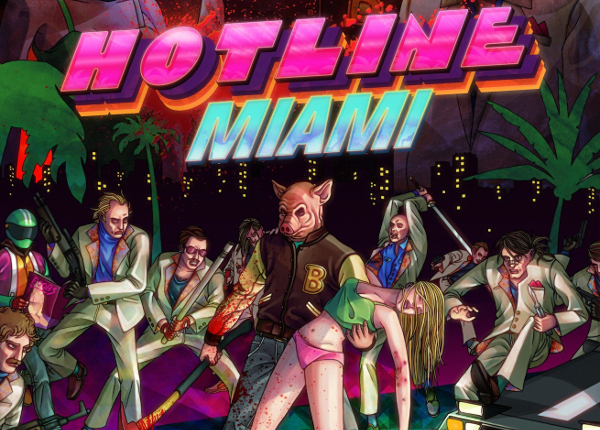
Getting’ Digital, Digital and Everything Old is New Again: Hotline Miami, 2012
Prior to the launch of the Xbox One, Microsoft ham-fistedly attempted to usher in their vision of an all-digital future the same way the Kool-Aid man might usher himself into a room by smashing through the nearest wall. The end result was massive backpedaling amongst much indignation both righteous and otherwise, as gamers shouted from the rooftops that you would pry their physical media out of their cold, dead, controller-calloused hands. Of course even if we set aside the powerful argument of shelf appeal (my god, those rows, so beautiful), the growing size of triple-A games and the limitations of many countries’ *cough* America *cough* internet infrastructure are pretty strong indicators that all download, all the time is still a ways off. Yet on the small-scale front, digital has already quietly stolen its way into our hearts…and wallets. While I wouldn’t peg a single trend as THE most important of the last generation (it was a pretty long one), it’s hard to argue that the advent of the bite-sized game didn’t represent a pretty fundamental shift in both how gamers consume content, and the value they place upon it.
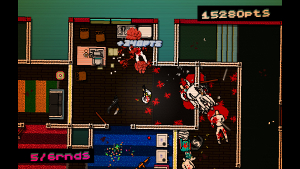 Of course this is a piece about video games, not economics, and my friends, Hotline Miami is a damn fine video game. Relentlessly brutal and brutally relentless, it takes the frenetic, masochistic appeal of a Super Meat Boy and adds a big, bloody S& to it. There’s a lot more to be said on the messages and narrative threads running under the game’s surface, but for now suffice to say that this is a game that might make you think about its violence even as you reveal in it. Not since Manhunt have I played a game this viscerally nasty and in a way that is at times surprisingly disturbing given its stripped down aesthetic. Granted, it’s not exactly a unique aesthetic.
Of course this is a piece about video games, not economics, and my friends, Hotline Miami is a damn fine video game. Relentlessly brutal and brutally relentless, it takes the frenetic, masochistic appeal of a Super Meat Boy and adds a big, bloody S& to it. There’s a lot more to be said on the messages and narrative threads running under the game’s surface, but for now suffice to say that this is a game that might make you think about its violence even as you reveal in it. Not since Manhunt have I played a game this viscerally nasty and in a way that is at times surprisingly disturbing given its stripped down aesthetic. Granted, it’s not exactly a unique aesthetic.
In fact, given the overwhelming preponderance of retro sprite and blocky polygon based games dominating the indie landscape, it certainly seemed like sometime in the last gaming cycle, it suddenly became hip to be square. Alright, that was a terrible pun, but please don’t go. I may be out of touch, but I just can’t fight this feeling that time after time indie developers have adopted the retro aesthetic as a means to open your heart only to shake you down in a classic case of expecting money for nothing but nostalgia. It’s just sad watching these developers take a long dead horse and beat it with a sledgehammer, and firing up Hotline it was hard not to think “here I go again” even as I desperately wanted the game to take my breath away. Also, Batdance.
 Yet unlike that previous paragraph, Hotline Miami relies on neither awkwardly shoehorned (and for younger readers, probably baffling) 80’s references nor its retro graphics for a cheap shot of rose-tinted credibility. Instead, everything from the trippy soundtrack to the acid-soaked visual cues give the game a feeling that is simultaneously a hyperbolic recreation and modern satire of an era that for many people is already nothing more than a pastiche of its most extreme elements. It’s a game of constant contradictions, one that uses a dated graphics and setting to offer an unequivocally modern experience.
Yet unlike that previous paragraph, Hotline Miami relies on neither awkwardly shoehorned (and for younger readers, probably baffling) 80’s references nor its retro graphics for a cheap shot of rose-tinted credibility. Instead, everything from the trippy soundtrack to the acid-soaked visual cues give the game a feeling that is simultaneously a hyperbolic recreation and modern satire of an era that for many people is already nothing more than a pastiche of its most extreme elements. It’s a game of constant contradictions, one that uses a dated graphics and setting to offer an unequivocally modern experience.
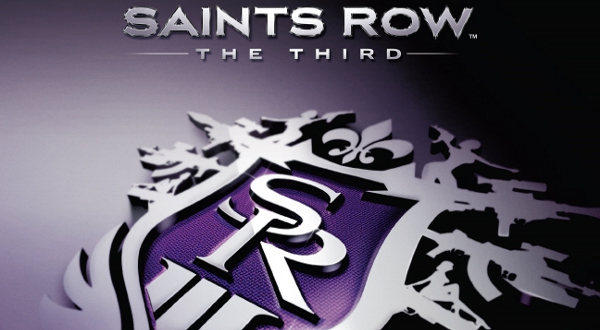
Endless Seas of Sand(boxes): Saints Row: The Third, 2011
Growing up, one of the fascinations that video games always held was the idea of freedom, being able to visit a crafted fantasy world not just as a railed voyeur but as an agent, affecting and changing the environment around me. Of course in hindsight that belief was either naïve or flat out stupid depending on how nice you want to be, but it represents a concept that games to this day continue to struggle with: player agency vs. the authorial vision. Some games simply choose to strap you in and send you on a carefully scripted (and often entertaining) thrill ride. Others, like The Walking Dead, effectively mask their strings and walls under the guise of impactful choice. Then of course there are the games that just say “fuck it,” hand you a rocket launcher and tell you to go nuts. No points for guessing which one Saints Row: The Third is.
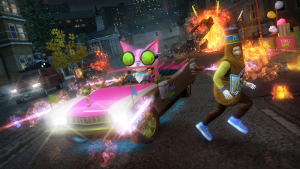 For younger gamers it may be hard to understand just how much of a revelation GTA III was given the huge cultural dominance of the current brand, but it’s not every game that almost single-handedly popularizes an entire genre. Suddenly sandbox was a thing, and “that game where you murder the hookers” was the phrase on everyone’s lips, and by everyone I mean befuddled parents and marginally informed talking heads. Of course the whole point of GTA III was that it wasn’t just a murder simulator. I mean it was (sidewalks = the sociopath’s shortcut!) but more than that it offered a level of fucking around never before seen in a game. Want to spend twenty minutes meticulously piling cars together, then blow them all to hell with a grenade? Do it. Want to spawn a tank then roll around smashing everything in your path? Hey, whatever floats your boat. What followed was a flood of sandbox titles, some good (Hulk: Ultimate Destruction!) some less so (True Crime!).
For younger gamers it may be hard to understand just how much of a revelation GTA III was given the huge cultural dominance of the current brand, but it’s not every game that almost single-handedly popularizes an entire genre. Suddenly sandbox was a thing, and “that game where you murder the hookers” was the phrase on everyone’s lips, and by everyone I mean befuddled parents and marginally informed talking heads. Of course the whole point of GTA III was that it wasn’t just a murder simulator. I mean it was (sidewalks = the sociopath’s shortcut!) but more than that it offered a level of fucking around never before seen in a game. Want to spend twenty minutes meticulously piling cars together, then blow them all to hell with a grenade? Do it. Want to spawn a tank then roll around smashing everything in your path? Hey, whatever floats your boat. What followed was a flood of sandbox titles, some good (Hulk: Ultimate Destruction!) some less so (True Crime!).
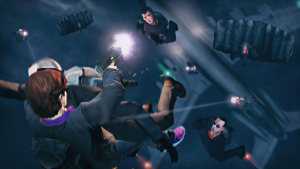 Yet moving to the new generation of consoles, Rockstar seemed to be guiding their flagship series towards a new, more mature direction, culminating in the apparently quite impressive GTA V (it’s on the list). But…but what about the fun? You remember fun don’t you? Enter…the Saints. As someone who has enjoyed the Saints Row series from its inception, I have no problem admitting that the first two games very much felt like spiritual successors to the San Andreas throne. They were knock-offs, entertaining and clearly heartfelt knock-offs to be sure, but knock-offs none the less. Yet with the third entry, something changed. After slowly turning up the dial on the nonsense over the past two games, developer Volition suddenly cranked that bad boy up to 11, ripped off the knob, then smashed the machine to pieces with a giant purple dildo. Saints Row: The Third was an exercise in absurdity aimed solely at the pursuit of pure, unbridled goofing off. Tired of waiting as your character carjacks some poor schmo? Just dropkick through the windshield (the BO-DUK-EN!) and be on your way! Tired of things like gravity and bullets affecting your character? Buy upgrades that let you soak up a few dozen clips, then faceplant off a skyscraper! Of course it helps that between screwing around you’ll get to engage in everything from a shoot-out on the evil twin of the S.H.I.E.L.D. Helicarrier to a human-pony chariot race. Suddenly the student had become the master, and the bar for bat-shit crazy open world titles had been set. Much like Borderlands 2, the humor won’t be for everyone, but if you’ve ever dreamed of running around in nothing by a stylish top-hat while shooting people with a mind-controlling octopus launcher, than by god you’re a more interesting person than me and this game would probably be redundant. For everyone else though, Saints Row: The Third represents if not a pinnacle, than at the very least a watershed moment in video game stupidity.
Yet moving to the new generation of consoles, Rockstar seemed to be guiding their flagship series towards a new, more mature direction, culminating in the apparently quite impressive GTA V (it’s on the list). But…but what about the fun? You remember fun don’t you? Enter…the Saints. As someone who has enjoyed the Saints Row series from its inception, I have no problem admitting that the first two games very much felt like spiritual successors to the San Andreas throne. They were knock-offs, entertaining and clearly heartfelt knock-offs to be sure, but knock-offs none the less. Yet with the third entry, something changed. After slowly turning up the dial on the nonsense over the past two games, developer Volition suddenly cranked that bad boy up to 11, ripped off the knob, then smashed the machine to pieces with a giant purple dildo. Saints Row: The Third was an exercise in absurdity aimed solely at the pursuit of pure, unbridled goofing off. Tired of waiting as your character carjacks some poor schmo? Just dropkick through the windshield (the BO-DUK-EN!) and be on your way! Tired of things like gravity and bullets affecting your character? Buy upgrades that let you soak up a few dozen clips, then faceplant off a skyscraper! Of course it helps that between screwing around you’ll get to engage in everything from a shoot-out on the evil twin of the S.H.I.E.L.D. Helicarrier to a human-pony chariot race. Suddenly the student had become the master, and the bar for bat-shit crazy open world titles had been set. Much like Borderlands 2, the humor won’t be for everyone, but if you’ve ever dreamed of running around in nothing by a stylish top-hat while shooting people with a mind-controlling octopus launcher, than by god you’re a more interesting person than me and this game would probably be redundant. For everyone else though, Saints Row: The Third represents if not a pinnacle, than at the very least a watershed moment in video game stupidity.
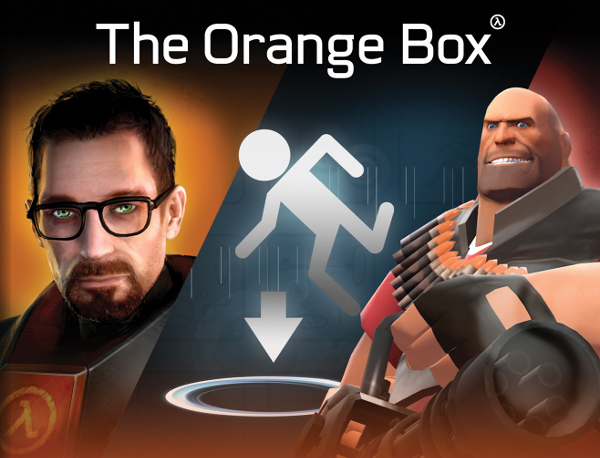
Gabe Newell’s About to Make You His Bitch: The Orange Box, 2007
For the non-PC gaming crowd, all this recent talk about “Steam Boxes” and “Steam OS” has likely inspired nothing more than vaguely negative ideas of be-cogged top hats and unnecessary goggles. For real PC gamers however, Steam is much more than just a hipster power source. It’s a stupid piece of shit overlay that’s constantly crashing damn thing making me buy stupid digital gat-dang I JUST WANT TO PLAY HALF-LIFE 2 YOU BASTARD! Whoa, sorry, quick flashback there. A recurring theme of this article is just how long the last generation was, but if you needed even more evidence look no further than Steam’s transformation from barely infuriatingly wonky novelty to platform dominating powerhouse. It would probably be hyperbolic to say that Steam basically IS modern PC gaming, but only a touch. Of course that success was hard fought, and largely built on the back of quality games. Speaking of which…
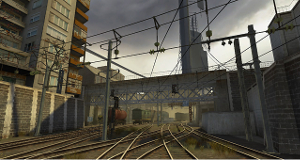 You know how sometimes when you order a pizza it comes with a free six-pack of beer and an entire cheesecake? No you don’t, because that never happens. Yet consumed by the spirit of giving (And possibly a touch of “Alright, our bad on that Steam launch.”) Valve decided that instead of just giving you the latest installment in one of PC gaming’s biggest franchises, or a commercial sequel to one of the most popular mods of all times, or an inventive and hilarious puzzle game that would launch a thousand memes, heck with it, they’d just give you all three. Yes, while its title may have been uninspired and its box art nigh-insultingly ugly, The Orange Box is likely the greatest bundle of gaming joy that ever was and ever will be. We’re talking Half-Life 2: Episode 2 (with free copies of 1 and the original game), Team Fortress 2, and the upstart newcomer Portal. Do I need to tell you these games were good? Fuck it, I’m going to anyway. DUDE, THESE GAMES WERE GOOD. While “The Cake is A Lie” has become the kind of overused punch line that makes you want to gouge out your own ears and/or eyeballs, Portal not only managed to combine an innovative (and awesome) mechanic with perfect puzzle design, it also gave us one of gaming’s greatest characters in the passive-aggressively homicidal GLaDOS. Then there was Team Fortress 2, as tight a team-based shooter as you were likely to find with a gorgeous cartoon art-style to boot. Oh, and there was more Half-Life (Note: this is a good thing.).
You know how sometimes when you order a pizza it comes with a free six-pack of beer and an entire cheesecake? No you don’t, because that never happens. Yet consumed by the spirit of giving (And possibly a touch of “Alright, our bad on that Steam launch.”) Valve decided that instead of just giving you the latest installment in one of PC gaming’s biggest franchises, or a commercial sequel to one of the most popular mods of all times, or an inventive and hilarious puzzle game that would launch a thousand memes, heck with it, they’d just give you all three. Yes, while its title may have been uninspired and its box art nigh-insultingly ugly, The Orange Box is likely the greatest bundle of gaming joy that ever was and ever will be. We’re talking Half-Life 2: Episode 2 (with free copies of 1 and the original game), Team Fortress 2, and the upstart newcomer Portal. Do I need to tell you these games were good? Fuck it, I’m going to anyway. DUDE, THESE GAMES WERE GOOD. While “The Cake is A Lie” has become the kind of overused punch line that makes you want to gouge out your own ears and/or eyeballs, Portal not only managed to combine an innovative (and awesome) mechanic with perfect puzzle design, it also gave us one of gaming’s greatest characters in the passive-aggressively homicidal GLaDOS. Then there was Team Fortress 2, as tight a team-based shooter as you were likely to find with a gorgeous cartoon art-style to boot. Oh, and there was more Half-Life (Note: this is a good thing.).
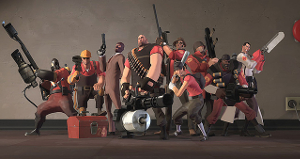 Yet as good as those games were (And did I mention they were good?) it was the Orange Box’s role in solidifying Steam as a platform that was the real story. Sure, there have been other digital distribution services. There’s indie focused services like GOG and Desura. There’s Blizzard, which much like Valve has leveraged it’s massively popular titles into a tight-knit digital universe. Then there’s EA’s Origin and Ubisoft’s Uplay, the two current competitors to the Steam throne. And by “competitors” I meant that in the same way that the Xbox 360 ‘competed’ with the WiiU and the Ouya (I’ll let you decide who’s who). That’s not to mention the string of forgotten hopefully who feel beneath the Steam-powered juggernaut (coming soon to a Renaissance Faire near you). As I mentioned at the beginning of the article, whether that digital dominance will translate to the hardware space remains to be seen, but if worst comes to worst maybe Valve can go back to the game well for a little hearts and minds campaigning. Left 4 Dead 3, Portal 3 and/or Half-Life 3 (stop laughing) might make pretty compelling Steam OS exclusives. Or if they’re feeling REALLY crazy…Orange Box 2 anyone?
Yet as good as those games were (And did I mention they were good?) it was the Orange Box’s role in solidifying Steam as a platform that was the real story. Sure, there have been other digital distribution services. There’s indie focused services like GOG and Desura. There’s Blizzard, which much like Valve has leveraged it’s massively popular titles into a tight-knit digital universe. Then there’s EA’s Origin and Ubisoft’s Uplay, the two current competitors to the Steam throne. And by “competitors” I meant that in the same way that the Xbox 360 ‘competed’ with the WiiU and the Ouya (I’ll let you decide who’s who). That’s not to mention the string of forgotten hopefully who feel beneath the Steam-powered juggernaut (coming soon to a Renaissance Faire near you). As I mentioned at the beginning of the article, whether that digital dominance will translate to the hardware space remains to be seen, but if worst comes to worst maybe Valve can go back to the game well for a little hearts and minds campaigning. Left 4 Dead 3, Portal 3 and/or Half-Life 3 (stop laughing) might make pretty compelling Steam OS exclusives. Or if they’re feeling REALLY crazy…Orange Box 2 anyone?